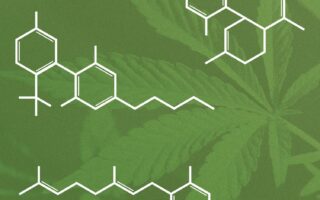Unraveling the Mystique: What Type of Drug is Marijuana?
In the ever-evolving landscape of modern medicine and recreational use, marijuana stands out as a plant that has sparked debate, curiosity, and a wave of changing perceptions. Once relegated to the shadows of societal stigma, cannabis has emerged into the spotlight, embraced by some as a natural remedy and scrutinized by others as a potential risk. But what exactly is marijuana? Classified scientifically as a drug, it weaves a complex narrative through its rich history, diverse applications, and multifaceted chemical compositions. In this exploration, we will dissect the nature of marijuana—delving into its classification, pharmacology, and the distinctions between its medicinal and psychoactive properties. Join us as we navigate this intriguing subject, shedding light on what makes marijuana a unique and multifarious substance in the realm of drugs.
Table of Contents
- The Complex Chemistry of Cannabis: Understanding Its Psychoactive Components
- Exploring the Therapeutic Uses of Marijuana: Potential Benefits and Risks
- Recreational vs. Medicinal Use: Navigating the Legal Landscape
- Safe Consumption Practices: Recommendations for Responsible Use
- Q&A
- In Summary
The Complex Chemistry of Cannabis: Understanding Its Psychoactive Components
Cannabis is a fascinating plant that contains a myriad of chemical compounds, primarily cannabinoids, terpenes, and flavonoids, which work synergistically to produce its diverse effects. The most notable psychoactive component is tetrahydrocannabinol (THC), known for its ability to induce a state of euphoria and modify sensory perceptions. It interacts with the endocannabinoid system by binding to cannabinoid receptors in the brain, particularly CB1 receptors, leading to the characteristic high associated with marijuana. Other cannabinoids like cannabidiol (CBD), while not psychoactive, play essential roles in the overall experience, often balancing THC’s effects and providing therapeutic benefits without the high.
Moreover, the psychoactive experience of cannabis is not solely determined by THC content. Terpenes, aromatic compounds found in various plants, contribute significantly to the plant’s aroma and potential effects. Some common terpenes associated with cannabis are:
- Myrcene: Known for its relaxing effects and earthy scent.
- Limonene: Associated with mood enhancement and a citrusy aroma.
- Pinene: May promote alertness and has a pine-like fragrance.
The interaction between these compounds creates what is known as the “entourage effect,” enhancing or modifying the experience of cannabis. Understanding these components can help users navigate their choices more wisely, allowing for tailored experiences that align with individual preferences and desired outcomes.
Exploring the Therapeutic Uses of Marijuana: Potential Benefits and Risks
As society continues to embrace a more nuanced understanding of cannabis, its therapeutic properties are increasingly recognized across various medical fields. Research suggests that marijuana may offer myriad benefits for patients suffering from conditions such as chronic pain, anxiety disorders, and even certain types of epilepsy. The plant contains over a hundred active compounds, primarily cannabinoids like THC (tetrahydrocannabinol) and CBD (cannabidiol), which interact with the body’s endocannabinoid system to alleviate symptoms.
However, the use of marijuana as a treatment option is not without its controversies and risks. Potential negative effects can include dependence, impaired cognitive function, and exacerbation of mental health issues in certain individuals. Furthermore, the variability in potency and effects across different strains complicates its therapeutic application. It’s essential for patients and healthcare providers to weigh the potential benefits against the risks, ensuring that marijuana is used safely and effectively in a clinical setting. Here’s a brief overview of possible benefits and risks:
| Potential Benefits | Risks |
|---|---|
| Chronic Pain Relief | Psychoactive Effects |
| Anxiety Reduction | Dependence Issues |
| Anti-Inflammatory Effects | Impaired Memory |
| Seizure Management | Potential Exacerbation of Mental Health Disorders |
Recreational vs. Medicinal Use: Navigating the Legal Landscape
The landscape of marijuana use is as varied as its applications, often divided into two main categories: recreational and medicinal. Recreational use primarily focuses on the psychoactive effects of THC, the compound responsible for the “high” sensation. Individuals engage in this use for various reasons, including relaxation, socialization, and enjoyment. As legal regulations surrounding recreational marijuana continue to evolve, many regions are embracing its commercialization, establishing policies to regulate sales, consumption spaces, and age restrictions. The appeal lies not only in personal enjoyment but also in economic opportunities, benefiting local businesses and generating tax revenue for states that legalize its use.
On the other side, medicinal use of marijuana is grounded in health applications, where patients may utilize specific cannabis strains for therapeutic purposes. Conditions such as chronic pain, epilepsy, and anxiety have seen promising results with cannabis treatments. The legal framework for medicinal marijuana often involves a more rigorous process, requiring patients to obtain prescriptions from healthcare providers and meet certain eligibility criteria. A table comparing the two can illustrate the primary distinctions:
| Aspect | Recreational Use | Medicinal Use |
|---|---|---|
| Purpose | Enjoyment and relaxation | Treatment of medical conditions |
| Legal Status | Varies by location | Requires prescription and regulatory approval |
| Primary Compound | THC | CBD, THC, and other compounds |
| Quality Control | Generally less regulated | Strict quality standards |
The intersection of recreational and medicinal use raises important questions and considerations for lawmakers, users, and the medical community. As society grapples with marijuana’s multifaceted nature, the need for clear guidance and informed discussion becomes paramount, ensuring safe and responsible usage for all. Understanding the legal landscape surrounding each type is crucial for both consumers and providers navigating this evolving terrain.
Safe Consumption Practices: Recommendations for Responsible Use
Engaging with marijuana, like any substance, requires an understanding of its effects and responsible usage. For those considering its consumption, start low and go slow: begin with a small dose, especially if you are new to this green herb. This allows you to gauge your body’s response and enjoy the experience without overwhelming sensations. It’s also vital to choose a safe environment where you feel comfortable and secure, ideally surrounded by friends who respect your choices. This practice not only enhances enjoyment but also creates a support system for those who may feel anxious or uneasy.
To ensure a balanced experience, it’s important to stay hydrated and avoid mixing marijuana with other substances, as this can lead to unpredictable outcomes. Additionally, consider the method of consumption you prefer—be it smoking, edibles, or oils, each has its unique potency and onset times. Here’s a quick comparison:
| Consumption Method | Onset Time | Duration |
|---|---|---|
| Smoking | Immediate | 1-3 hours |
| Edibles | 30-90 minutes | 4-8 hours |
| Oils/Tinctures | 15-45 minutes | 3-6 hours |
Remember to respect local laws and regulations regarding marijuana usage, and always prioritize your health and well-being while exploring its effects. Embracing these recommendations will help cultivate a mindful and enriching experience.
Q&A
Q&A: Understanding the Nature of Marijuana
Q: What type of drug is marijuana?
A: Marijuana is classified primarily as a psychoactive substance, deriving from the Cannabis sativa plant. The two main compounds, THC (tetrahydrocannabinol) and CBD (cannabidiol), contribute to its effects on the human brain and body. While THC is responsible for the euphoric “high,” CBD is often associated with therapeutic benefits without the psychoactive effects.
Q: Is marijuana a legal drug?
A: The legality of marijuana varies widely around the world. In some regions, it is fully legalized for both recreational and medicinal use, while in others, it remains strictly prohibited or only allowed for medical purposes. Checking local laws is essential to understand its status in your area.
Q: How does marijuana affect the body?
A: Marijuana interacts with the body’s endocannabinoid system, which plays a crucial role in regulating various functions including mood, memory, appetite, and pain sensation. The effects can vary; users may experience relaxation, altered perceptions, and increased appetite, while some individuals might also face anxiety or paranoia.
Q: Can marijuana be addictive?
A: While marijuana is generally considered less addictive than substances like alcohol or opioids, it can still lead to dependency in some users. Approximately 9% of those who experiment with marijuana may develop a substance use disorder, and this risk increases for individuals who start using at a young age.
Q: Are there medicinal uses for marijuana?
A: Yes, marijuana has been found to possess various therapeutic properties. It is often used to alleviate chronic pain, reduce inflammation, manage anxiety, and support sleep disorders. Certain formulations of CBD are also utilized for epilepsy and other medical conditions, but the efficacy and safety should be discussed with a healthcare professional.
Q: What are the risks associated with marijuana use?
A: Alongside its potential benefits, marijuana use comes with risks including impaired cognitive function, respiratory issues (from smoking), and possible negative impacts on mental health, particularly in those predisposed to conditions like schizophrenia. Long-term effects of frequent use are still being studied to understand their full impact.
Q: How is marijuana consumed?
A: Marijuana can be consumed in several forms: smoked as a joint or in a pipe, vaporized, ingested through edibles like brownies or gummies, and applied topically in oils or creams. Each method of consumption can affect the speed and intensity of the drug’s effects.
Q: Is marijuana considered a gateway drug?
A: The “gateway drug” theory posits that marijuana use may lead individuals to experiment with more dangerous substances. While some studies suggest a correlation, causation is still debated among researchers, and many factors contribute to substance use behavior.
Q: How is marijuana regulated?
A: In places where marijuana is legal, it is usually subjected to regulation by governmental bodies, including cultivation, sales, age restrictions, and potency limits. These regulations aim to ensure safety and control the market, while also generating tax revenue.
Q: What should someone consider before using marijuana?
A: Individuals should educate themselves about their local laws, potential health effects, personal medical history, and reasons for consumption. Consulting with a healthcare professional, particularly if other medications are involved or if there are pre-existing health issues, can provide essential guidance.
—
This Q&A offers a nuanced view of marijuana, highlighting its complexities as both a drug and a social issue. Understanding its multifaceted nature can empower individuals to make informed decisions regarding its use.
In Summary
the intricate tapestry of marijuana—woven from its varied components and complex interactions with the human body—reveals a substance that is far more than just a plant. It straddles the line between herb and medicine, recreational use and therapeutic potential, embodying a unique blend of both cultural significance and scientific intrigue. As understanding evolves, so too does the conversation surrounding marijuana, urging us all to consider its myriad effects and the role it plays in our society. Whether seen through the lens of a psychoactive substance or a healing ally, marijuana invites us to engage thoughtfully with the nuances of its existence. As we continue to explore the depths of this multifaceted drug, one thing remains clear: the journey of discovery is just beginning, and it holds the promise of unlocking new insights into health, wellness, and the human experience.


